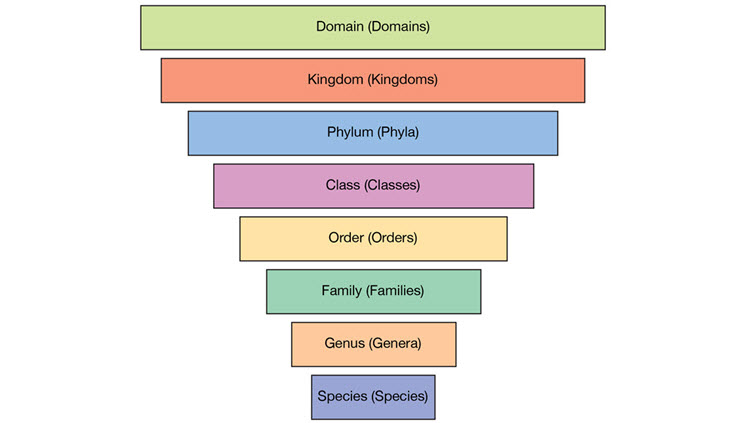
Rich Taxonomies Make Research Less Taxing
Anyone who has ever taken high school biology is familiar with the term taxonomy. It is the science of naming, describing and classifying organisms, and includes all plants, animals and microorganisms of the world.
Information scientists (read: librarians) have borrowed the term taxonomy from natural scientists to describe a different type of organizational scheme, one that focuses on ideas expressed in words (what librarians call “entities”).
This kind of taxonomy is a vital underlying component of any knowledge management (KM) system that seeks to organize and present textual information. The more robust the taxonomy, the easier it is to find relevant material within the KM system.
Taxonomies surface information and then allow for a searched term to present “buckets” related to the term, making it easy to do a simple search and then narrow it down. This is especially important now that so much work is performed on mobile devices, with their small screens that favor one- or two-word search terms; taxonomies effectively expand search results to include what we meant to ask, which makes the results far more valuable.
Traditionally, entities in a taxonomy are proper nouns: people, places, and organizations. But a valuable extension for a KM system is to include a relevant taxonomy of context-specific entities that go beyond proper nouns. In different settings the relevant set of context-specific entities would be different. For example, in the IT domain, Northern Light’s taxonomy includes terms like artificial intelligence, VOIP, cloud computing, and software as a service. In a pharmaceutical setting, we include entities like diabetes, Lipitor, and monoclonal antibodies. In addition, we use a thesaurus for synonyms, so the system recognizes that “Covid” is equivalent to “COVID19” and “coronavirus”; that “AI” is equivalent to “machine learning”; and that “price cut” is equivalent to “reduce prices” and “price drop”.
Significantly, at Northern Light we have extended our taxonomies even further to optimize our search capability for business research and competitive intelligence (CI) purposes. This more profound extension is the idea of “meaning-loaded entities”: events, conditions, situations, outcomes, actions, relationships, and trends that imply significance for the professional purpose of the search. For example, in our SinglePoint™ KM platform we have a number of general, business-related meaning-loaded entities such as price cut, change in market share, and strategic partnership. In our pharmaceutical industry taxonomy, we have meaning-loaded entities for clinical trial, patent lost, and generic drug.
Northern Light’s rich taxonomies are the foundation upon which our text analytics capability is built. Because all documents are deeply tagged according to relevant industry-specific taxonomies, it allows a user to discover relationships between the concept areas revealed in search results, which mitigates research barriers such as unfamiliar or unidentified concepts, symbols, acronyms and aliases. Using this helps the user uncover relevant business issues hidden in content, identify threats and opportunities regarding products, market share, pricing, new technologies, marketing partnerships, and business strategy.
Because Northern Light has been at this a long time, we currently have some 60,000 terms in our various industry taxonomies, and they are remarkably complete and comprehensive. As evidence, several years ago one leading IT vendor (a household name we can’t mention here) asked to review Northern Light’s IT industry taxonomy and, after a thorough analysis, added a grand total of three terms to it. That was a powerful endorsement of the work our taxonomists have done! And while it’s all under the covers, taxonomies make possible much of the functionality all Northern Light users benefit from every day.
To learn more how robust, industry-specific taxonomies can enhance a strategic research portal at your organization, contact Northern Light.